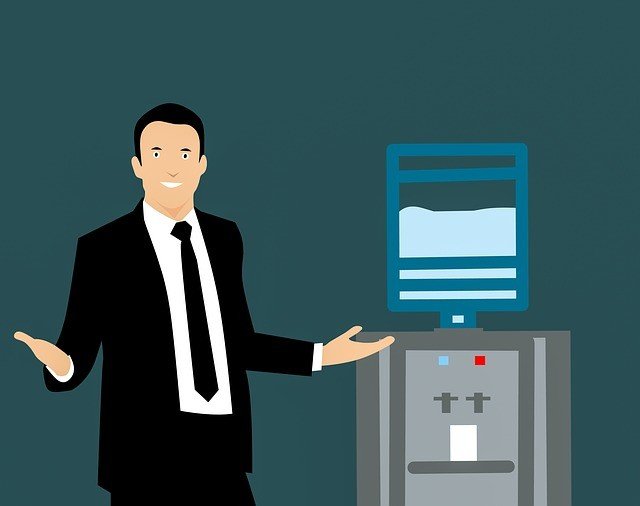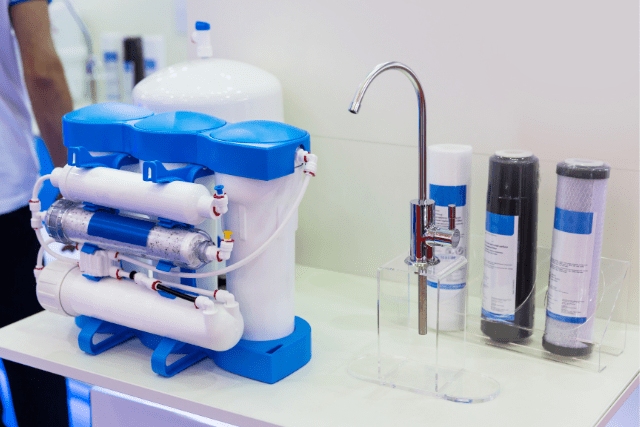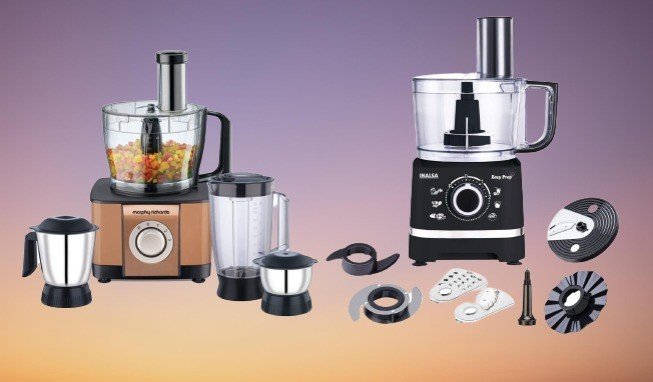When looking for clean water, there’s more to it than just making sure it’s free of dirt or germs. Today, a good water purifier needs to have several important features to meet our needs.
These include advanced filtration technology, energy efficiency, maintenance and alert systems, essential mineral retention, and smart connectivity. These features turn a basic water filter into a powerful tool for health and ease of use.
Let’s see why these features are so important for anyone buying a water purifier today.
Key Takeaways
- Advanced filtration technology ensures the removal of up to 99% of contaminants for utmost purity.
- Energy-efficient designs reduce electricity consumption while maintaining high water quality.
- Smart connectivity features offer convenience in monitoring and managing water purification remotely.
- Systems that retain essential minerals provide healthier, nutrient-rich drinking water.
Advanced Filtration Technology
In any top-notch water purifier, special filtration technology is key to making sure harmful stuff is removed from your water. This isn’t only about getting rid of things you can see; it’s also about dealing with tiny dangers that can harm your health. The cleaning process has several steps, and each step has its job in making your water pure.

The process usually starts with a pre-filter, which catches big particles like dirt and sand. This is important to keep the next filters from getting blocked. Then, you often find activated carbon filters. They are good at taking out chlorine, bug killers, and natural materials, making your water taste and smell better.
But the most important part might be the reverse osmosis (RO) membrane. This special filter can take away up to 99% of tiny bits, bacteria, and other harmful things in the water that normal filters can’t catch. Some systems also use ultraviolet (UV) light to kill germs, making sure your water is not only clean but also safe to drink.
Read more at Reverse Osmosis vs UV Filtration
Energy Efficiency
When you make sure your water is very clean, it’s also important to think about how much electricity it uses. Being careful with energy when using water purifiers is important not just to save money, but also to help the environment. The best water purifiers use new technologies to clean water without using a lot of power.
Let’s look at the difference between normal and energy-saving water purifiers:
| Feature | Normal Model | Energy-Saving Model |
|---|---|---|
| Power Use | Uses more electricity because it’s always on | Uses less electricity by working smarter |
| Cleaning Technology | Old methods that need more power | New technologies like UV LED that need less power |
| How Well It Works | Always works hard, even if the water is already clean | Changes how hard it works based on how dirty the water is, saving energy |
Choosing a water purifier that saves energy doesn’t mean you’re getting less clean water. It means you’re picking a device that only uses power when it needs to.
Look for ones that don’t use a lot of electricity but still clean the water well. Using an energy-efficient water purifier helps you live in a way that’s better for the Earth.
Maintenance and Alert Systems
Making sure your water purifier has a good maintenance and alert system makes it last longer and work better. These systems help you know when something needs fixing so you can keep your water clean all the time. Here are important things to look for:
- Filter Change Indicator: It’s very important. Filters don’t work as well over time, and you shouldn’t have to guess when to change them. A smart system tells you exactly when it’s time to change the filter, based on how much water you use and the water’s quality.
- UV Fail Alarm: If your purifier uses UV technology, this alarm is very important. It quickly lets you know if the UV cleaning doesn’t work, so you won’t drink water that isn’t clean.
- Error Alerts for System Malfunctions: A good purifier checks itself for problems like electrical issues or pump problems and tells you. This helps stop dangers before they happen and makes the purifier last longer.
- TDS Level Indicators: Knowing the Total Dissolved Solids (TDS) level in your water helps you see if your purifier is working right. If the TDS level changes a lot, it might mean your purifier needs to be checked or fixed.
Adding these features to your water purifier keeps you safe and makes sure your purifier works well for a long time.

Essential Mineral Retention
A key part of a good water purifier is its ability to keep important minerals, making sure the water you drink is not only clean but also healthy for you. This feature doesn’t only clean the water; it makes it better, giving your body important nutrients.
Minerals like calcium, magnesium, and potassium are important for strong bones, a healthy heart, and feeling good overall. Some ways of cleaning water can take away these minerals. But, newer purifiers have technology that gets rid of bad stuff while keeping these good minerals.
For example, reverse osmosis (RO) systems have gotten better and now have special parts or filters to put minerals back into clean water. This makes the water’s pH balance better and makes it taste good. This process is careful, making sure the water is clean and full of minerals.
It’s important to know how your water purifier keeps minerals. Look for systems that explain how they keep minerals and what kinds they keep. This feature shows that the purifier can give you water that is not only safe but also good for your health.
Smart Connectivity Features
In today’s world, many water purifiers come with cool features that let you check and manage them from anywhere. These features make it easy to keep your water purifier working well all the time. Here are four important smart features to look for:
- Wi-Fi Connectivity: This lets your water purifier connect to your home internet. You can use a phone app to check the filter, see how clean the water is, and even plan when to purify water.
- Real-Time Alerts: Get quick messages on your phone about what’s happening with your purifier, like when to change the filter or if something goes wrong. This keeps you up-to-date on how your purifier is doing.
- Remote Troubleshooting: Some purifiers can be checked and fixed from afar. This means customer service can figure out problems without having to come to your house, making things easier for you.
- Customization Options: High-tech models let you change how the water is purified using your phone. You can adjust settings based on what you like or the starting quality of the water, making sure the water you drink is just right for you.
These smart features make using your water purifier easier and help make sure you always have safe, clean water to drink.

Frequently Asked Questions
What is an RO water purifier?
An RO water purifier stands for Reverse Osmosis water purifier, a system that uses a semi-permeable membrane to remove impurities and contaminants from water.
How does UV water purifier work?
A UV water purifier uses ultraviolet light to disinfect water by inactivating bacteria and viruses, providing an effective method for water purification.
What are the common types of water sources for home use?
The common types of water sources for home use include tap water, well water, bottled water, and purified water obtained from water purifiers.
Why is it important to choose the right water purifier for your home?
Choosing the right water purifier ensures that you have access to clean and safe drinking water, free from harmful contaminants and impurities.
What factors should I consider before buying a new water purifier?
When buying a new water purifier, it’s crucial to consider the quality of your water supply and any specific contaminants you need to remove. Check certified water purifier buying guides to understand the different purification technologies like reverse osmosis, UV, and activated carbon filters – and choose one that effectively eliminates the impurities present in your water.
The purifier’s capacity should match your household’s daily water consumption needs. Convenience features like hot and cold water dispensers, remineralization for improving taste, and automatic filter change reminders are worth evaluating based on your requirements.
Also factor in the purifier’s energy efficiency, maintenance costs for filter replacements, warranty coverage, and overall build quality from a reputable brand. Taking these factors into account will ensure you get a water purifier that provides clean, safe, and great-tasting water daily.
How can I ensure I select the right water purifier that suits my needs?
To select the right water purifier, evaluate the TDS (total dissolved solids) level in your water supply and choose a purifier that can effectively reduce it to provide you with quality drinking water.
What is the purification process of a water purifier?
The purification process of a water purifier typically involves multiple stages such as sediment filtration, activated carbon filtration, reverse osmosis, UV disinfection, and post-filtration to ensure safe and clean drinking water.
Conclusion
To make sure your drinking water is clean and good for your health, you need to pick a water purifier that does more than just filter out bad stuff.
Look for a purifier that has advanced filtration technology to clean the water well, uses less energy to help save on your bills, tells you when it needs fixing or cleaning, keeps important minerals in the water, and can connect to your phone or computer so you can check on it easily.
This way, you get water that’s not only safe to drink but also full of nutrients that are good for you.







